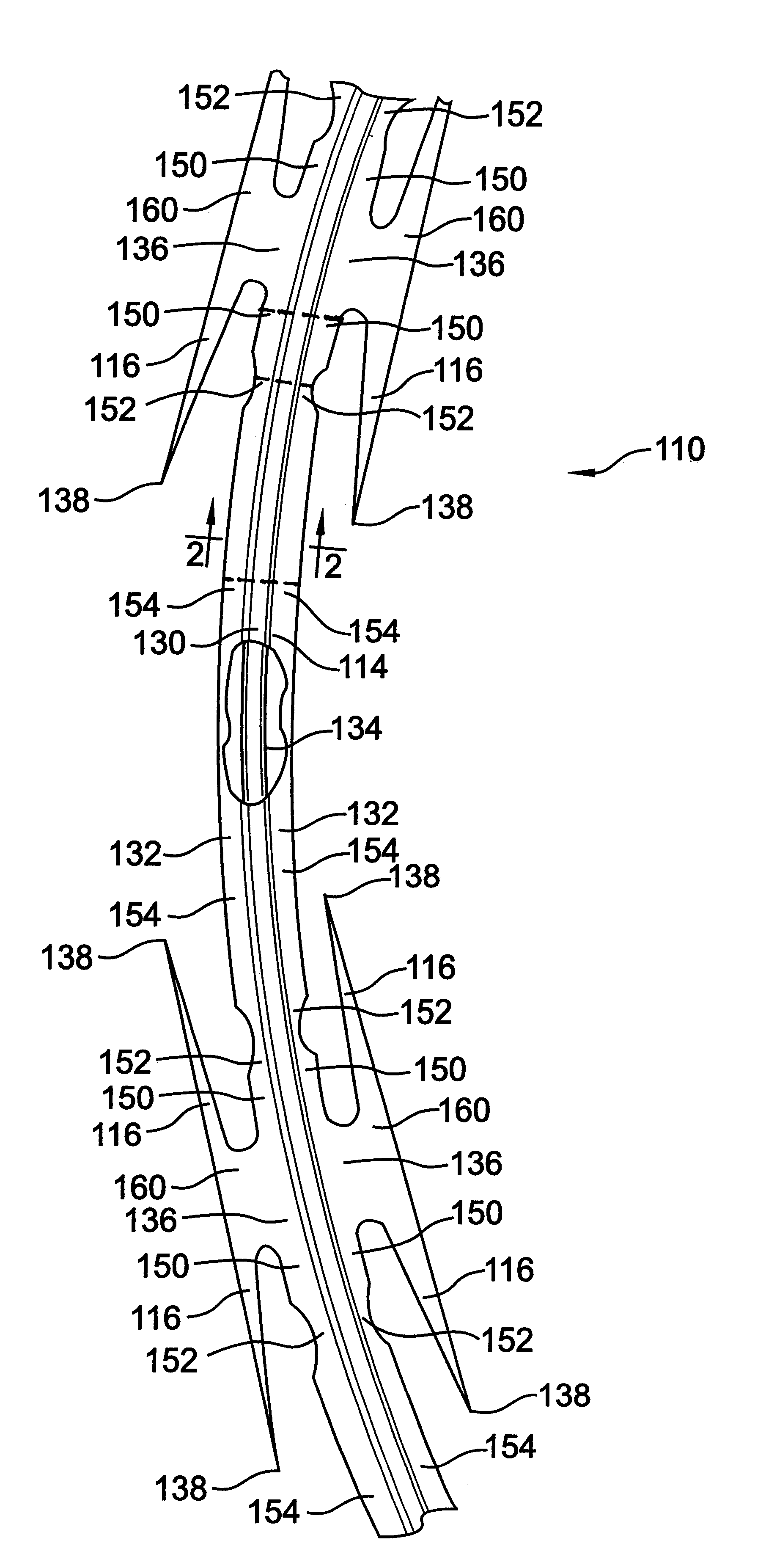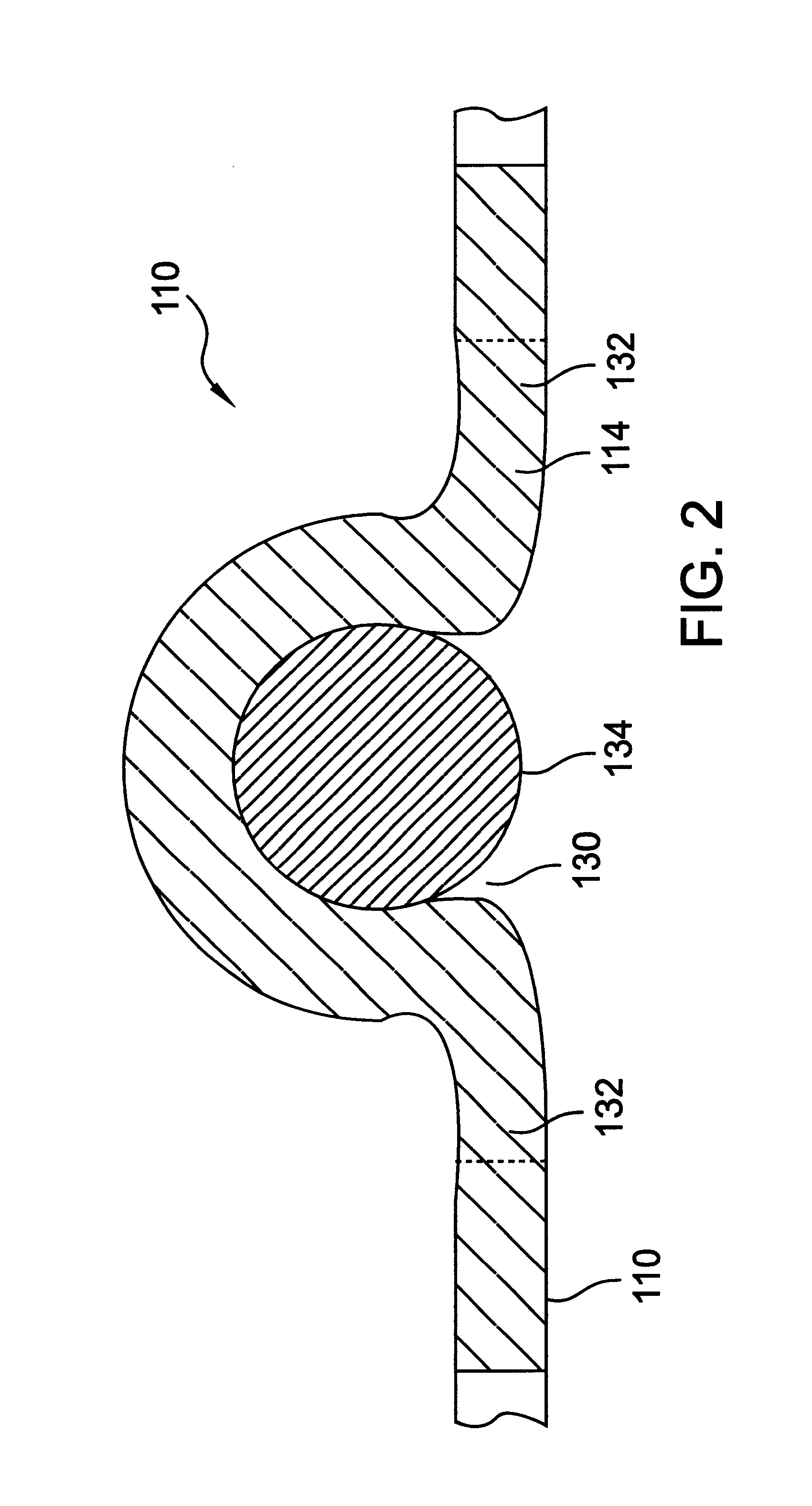Barbed tape
a barbed wire and tape technology, applied in barbed wire, building types, constructions, etc., can solve the problems of short, unimposing barbs, and lack of strength of barbed wire to resist crushing, and achieve the effect of high resistance to crushing, inexpensive and efficient manufacturing
- Summary
- Abstract
- Description
- Claims
- Application Information
AI Technical Summary
Benefits of technology
Problems solved by technology
Method used
Image
Examples
Embodiment Construction
Referring to FIG. 1, a barrier 108 includes barbed tape 110 mounted on a wall 112. Barbed tape 110 preferably includes an elongated strip of metal or metal body 114, which has been bent slightly along its longitudinal axis in such a way that the strip substantially forms a helix. Barbs 116 extend from opposing sides of body 114. Preferably the barbs are in clusters of four barbs, with a pair of barbs extending from each side of body 114. Each pair of barbs includes two barbs 116 extending in each opposing longitudinal direction. The helical structure is optimal for preventing intrusions across the barrier because barbs 116 at the top of barrier 108 extend directly toward a would-be intruder. Structural patterns other than helical are also possible. For example, the structure could be a concertina pattern where adjacent loops of helical coils are attached to one another at specified points on the circumference.
The helical structure is also used to facilitate storage and shipment of b...
PUM
 Login to View More
Login to View More Abstract
Description
Claims
Application Information
 Login to View More
Login to View More - R&D
- Intellectual Property
- Life Sciences
- Materials
- Tech Scout
- Unparalleled Data Quality
- Higher Quality Content
- 60% Fewer Hallucinations
Browse by: Latest US Patents, China's latest patents, Technical Efficacy Thesaurus, Application Domain, Technology Topic, Popular Technical Reports.
© 2025 PatSnap. All rights reserved.Legal|Privacy policy|Modern Slavery Act Transparency Statement|Sitemap|About US| Contact US: help@patsnap.com



